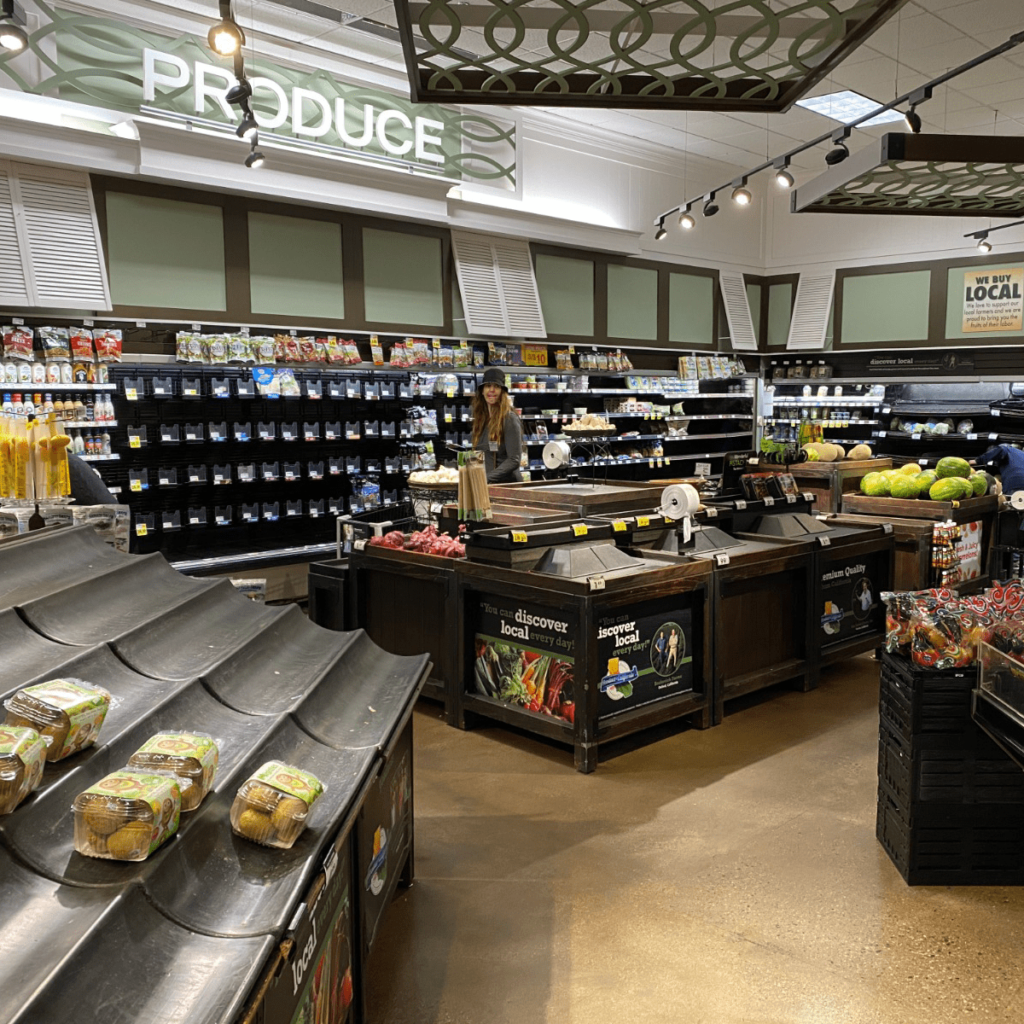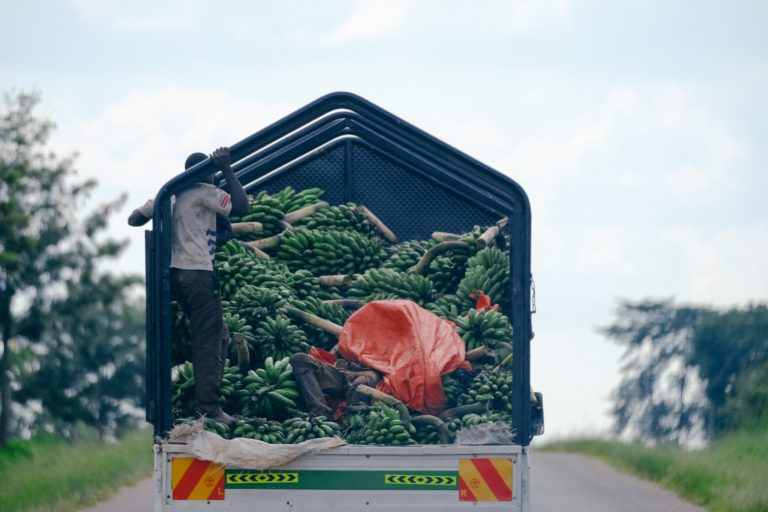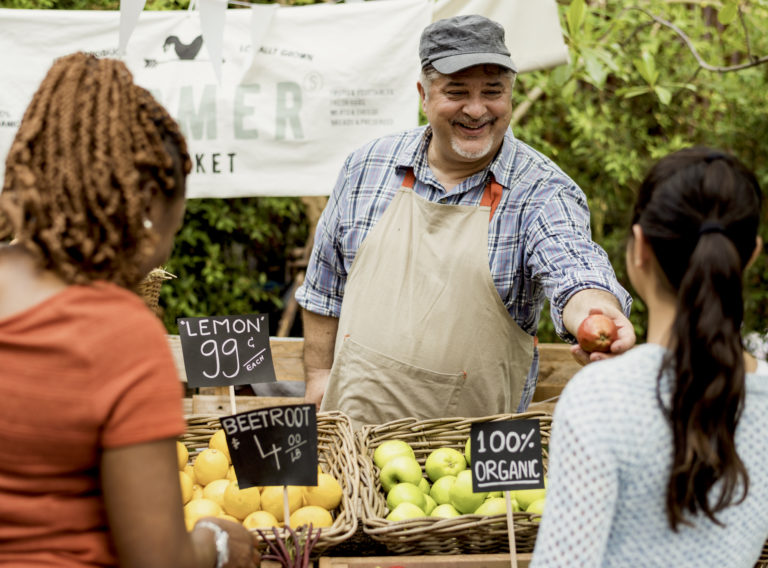Grocery Store Panic: A Supply Chain Wake-Up Call
How Covid-19 Impacts Your Food Accessibility
Walking into the supermarket to find the shelves empty throughout the store is harrowing. For many, it’s a moment of incredible helplessness and panic. Covid 19 panic buying is an all-too-familiar scenario.
This has been the scene in the two supermarkets I visited in New York. It has been the scene all over, as recounted by my colleagues and friends. Articles and photos from around the US and Canada repeat the same story. People are panicking in the grocery store and hoarding food and products.

Most of us rely on a miraculous system that we never paid attention to. This system brings fresh and processed products from all over the world to our fingertips. We work a job, get paid, then show up at the market (or online) to pick out our groceries. Until now, we rarely considered what would happen if it all disappeared overnight. We assumed that there will always be a variety of products on the shelves. Will there?
It seems likely that agricultural and food supplies will continue to be available to us in the US, despite recent panic. However, the experience of an empty supermarket ought to spark curiosity, if not fear, in even the most aloof among us.
“Humanity requires agriculture to live.”
We rely on a decentralized, interconnected web of outdated supply chain systems that require consistency in production and logistics. This system includes farming, harvesting, and too often long-distance shipping. Outputs and money exchange hands across farmers, aggregators, packers, processors, distributors, warehouses, wholesalers, and ultimately the retailers and food service providers that interact directly with customers.
Based on my conversations with growers, packers, and distributors from Latin America, California, and New York it appears that Covid-19 could likely disrupt supply chains in the short term if domestic and international migrant and nationalized harvest crews, packing facilities, truck drivers, and warehouse employees are restricted from working.
This will impact fresh produce supply chains more rapidly than non-perishable packaged goods, depending on inventory and warehouse levels.
It’s also worth considering that the United States, like many nations, are highly dependent on the importation of food, especially fresh products. If international supply chains are disrupted or the importation of fresh produce is suspended, it may cause near-term shortages.
Supply Chains & the Covid 19 Panic Buying Phenomena
This grocery store Covid 19 panic buying nightmare exposed just how delicate our supply chains are, and how terrifying a core disruption to our food or agricultural systems would be. This has been a reality in parts of Venezuela in recent years. Few expected the grocery store scene across the US this past week.
What if. in a Covid 19 panic buying situation, supermarket shelves remained empty for an extended period of time due to an inability to restock?
What if the imported food products we rely on were disrupted by supply shocks or strategic decisions made by foreign governments to keep food products domestic or to ship to countries other than the US?
These are realistic questions. Any country that is heavily dependent on food imports, like the U.S., ought to consider them.
The greatest risk here is not the Coronavirus itself.
The current pandemic is an uncomfortable warning about the fragility of our systems. There are far deeper and more complex challenges on the horizon.
The world should be preparing for the mega-impact of climate change, the cumulative consequences of industrial externalities and chemical-intensive agriculture practices over the past 70 years, and an aging farmer population.
Challenges to the future food supply chains in our globalized agricultural system include:
- Growing global populations
- Loss of topsoil
- Farmer poverty, debts, and suicide
- Droughts and the drying up of rivers and freshwater tables
- Contamination of fresh water sources from industrial activities and conventional agriculture
- Migration of younger generations to cities (i.e. not enough farm workers and future farmers)
Unfortunately, these are the real issues facing our food supplies—not just in distant lands, but right here in the US too.
The good news is that there is still an opportunity to shift things today and prepare for a sustainable future. But we have to take this seriously and act intelligently for the sake of our health, economy, and overall peace and stability.
Here are a few solutions that could have a profound impact on humanity’s resiliency and capacity to feed itself securely into the distant future.
For industry, government, and NGOs:
- More farms and farmers. Especially small-scale organic farms managed by younger members of society who are ready to be professional agriculturalists.
- A facelift for farming as a profession. We need to make farming digital, fun, and profitable. Training and capacity building for prospective farmers requires significant attention and has to be subsidized, incentivized, and celebrated.
- Tracking all supply chain activities domestically and globally in real time.
- Reducing industrial food waste with the digitization of supply chains and real-time access to data.
- Improved year-round production with greenhouses and vertical farms.
- A victory garden (urban gardening at homes, schools, and public locations) marketing campaign, including training seminars, free seeds, and free compost.
For Consumers:
- Become part of the solution. Support local food sources, farmers markets. independent restaurants, and local farmers with CSA (consumer supported agriculture) models.
- Learn a lesson from what we saw during the Covid 19 panic buying trend
- Demand that your retailers and restaurants buy regionally and locally when possible. Demand organic, fair trade, and regenerative products and for greater traceability and transparency.
- Build or participate in resilient local food systems. Start farming. Or converting front yards, backyards, decks, patios and communal lands into food production centers.
Business as usual may no longer be usual in the post-Coronavirus supply chain, and we are hoping that this current panic will lead to a clear consensus on shifting investments, resources, production and consumption into resilient local, regional, and national agricultural food systems—in the US and around the world.


